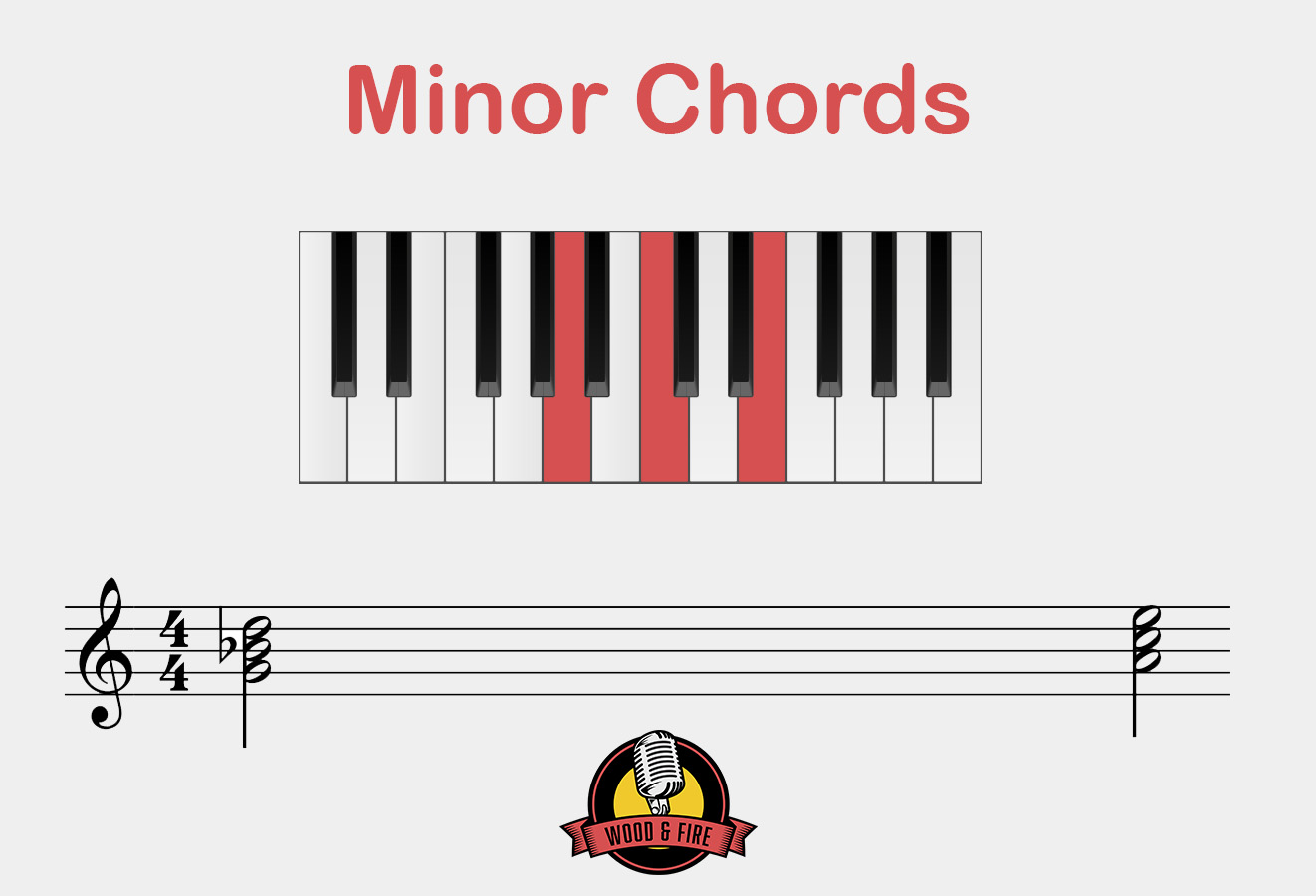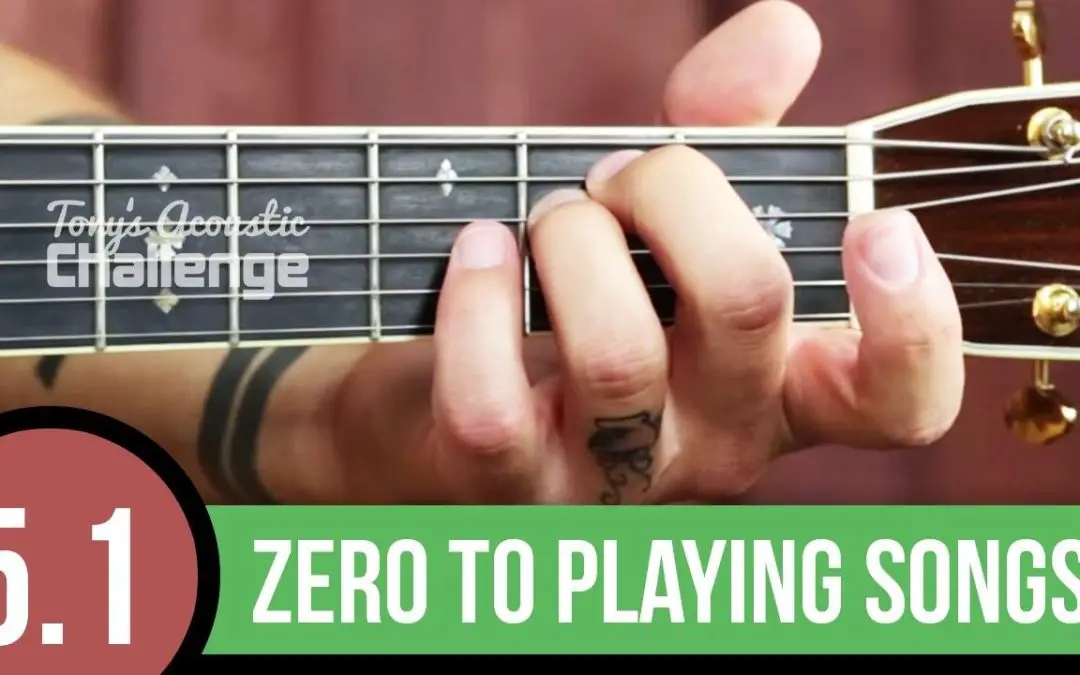Unleash your inner emo rockstar and master the art of heartbreaking melodies with our Minor Chord Guitar Tutorial! Say goodbye to happy-go-lucky major chords and hello to the dark and brooding world of minor chords. Get ready to dive deep into your feelings and strum your way to emotional catharsis. Grab your guitar and let’s channel our inner angsty teenager as we explore the power of minor chords in this tutorial. Embrace the darkness, my friends, it’s time to get in touch with your inner drama queen.
Contents
- 1 Understanding the Emotional Power of Minor Chords
- 2 Exploring the Basics: Finger Placement and Strumming Patterns for Minor Chords
- 3 Navigating Through Common Minor Chords: A Minor, E Minor, and D Minor
- 4 Incorporating Minor Chords into Your Playing: Tips and Techniques
- 5 The Role of Minor Chords in Songwriting and Composition
- 6 Expressing Emotion Through Music: The Impact of Minor Chords on Listeners
- 7 Advanced Techniques: Adding Depth with Minor Seventh and Minor Ninth Chords
- 8 FAQs
- 9 Don’t Fret, Master Those Emotions!
Understanding the Emotional Power of Minor Chords
Have you ever listened to a song and felt an overwhelming sense of melancholy wash over you? Chances are, you were being serenaded by the emotional power of minor chords. Those sneaky little notes have the ability to tug at your heartstrings and make you feel all the feels.
Minor chords are like the emo teenagers of the music world – they’re moody, brooding, and love to dwell on their sad feelings. They add depth and complexity to a song, creating a sense of tension and unease that can be both haunting and beautiful.
When you hear a minor chord, it’s like being hit with a wave of sadness that you never saw coming. It’s like getting stood up for prom, or finding out your favorite ice cream flavor has been discontinued. It’s dramatic, it’s intense, and it grabs your emotions by the throat and refuses to let go.
So next time you’re in the mood for a good cry or just want to wallow in your feelings, put on a song filled with minor chords and let yourself get swept away in the emotional rollercoaster that is music. Because sometimes, a little sadness is just what the doctor ordered. Just make sure you have some tissues handy.

Exploring the Basics: Finger Placement and Strumming Patterns for Minor Chords
So you’ve mastered the major chords and now you’re ready to tackle the world of minor chords. Congratulations! You’re about to unlock a world of emotions and depth in your music. But before you dive in, let’s make sure your finger placement and strumming patterns are on point.
When it comes to minor chords, remember that they have a sad and melancholic feel to them. So approach them with a sense of pathos and drama. Start by placing the tips of your fingers on the correct frets, making sure to press down firmly and evenly. This will ensure a clean and clear sound that will tug at the heartstrings of your listeners.
As for strumming patterns, try experimenting with different rhythms to find the one that suits the mood of the song. You can start with a simple down-up strumming pattern and then gradually add more complexity as you build your confidence. Remember, the key is to feel the music in your bones and let your fingers dance across the strings with finesse.
So grab your guitar, strike a dramatic pose, and get ready to explore the world of minor chords. With the right finger placement and strumming patterns, you’ll be able to add depth and emotion to your music. Who knows, you might even bring a tear to your own eye with the beauty of your playing. Happy strumming!

So you’ve mastered the major chords and now you’re ready to dive into the world of minor chords. But wait, don’t fret! Navigating through common minor chords like A Minor, E Minor, and D Minor doesn’t have to be a daunting task. Let me be your trusty guide as we explore these three minor players.
First up, we have A Minor, the moody teenager of the chord family. Just like its major counterpart, A Minor is made up of three simple notes – A, C, and E. It’s like the gloomy teenager who listens to sad music in their room all day, but hey, everyone needs a little angst in their lives, right?
Next, we have E Minor, the chill surfer dude of the chord world. With only two notes – E and G – E Minor is like the laid-back friend who’s always down to hang out and jam. It may not be the most complex chord, but it sure knows how to bring some cool vibes to the party.
Finally, we come to D Minor, the dramatic diva of the minor chords. Made up of D, F, and A, D Minor is like the actor who always steals the show with their emotional performances. Whether you’re strumming it on a guitar or playing it on a piano, D Minor knows how to add some serious flair to your musical repertoire.

Incorporating Minor Chords into Your Playing: Tips and Techniques
So you’ve mastered your major chords and now you’re ready to take it to the next level with minor chords. Fear not, dear musician, for I have some tips and techniques to help you incorporate those moody minor chords into your playing like a pro!
First off, don’t be afraid to experiment with different voicings of minor chords. Mix it up and try playing a minor chord in different positions on the fretboard to see which sound you like best. You might be surprised at the new tones you discover by simply changing up the fingerings.
Another fun way to incorporate minor chords into your playing is by adding them into your chord progressions. Don’t just stick to the tried and true major chords – throw in a minor chord here and there for some unexpected twists and turns in your music. Who knows, you might stumble upon a magical musical combination that you never would have thought of without those minor chords!
And finally, don’t forget to have fun with it! Music is all about expressing yourself and letting your creativity shine. So go ahead, play around with those minor chords, experiment with different sounds, and most importantly, enjoy the process. Who knows, you might just unlock a whole new level of musicality in your playing!
The Role of Minor Chords in Songwriting and Composition
Minor chords – the underdogs of music composition. While they may not always get the spotlight like their major chord counterparts, minor chords play a crucial role in setting the mood and adding depth to any song.
Think of minor chords as the moody teenagers of the musical world. They bring a sense of melancholy, mystery, and drama to your compositions, making them perfect for those brooding ballads or emotional anthems.
When used strategically, minor chords can create tension and contrast in your songs, making the eventual resolution to a major chord all the more satisfying. It’s like adding a little spicy kick to an otherwise bland musical dish – unexpected, but oh so delicious.
So next time you’re composing a song, don’t overlook the power of minor chords. Embrace their dark and complex nature, and watch as they add a whole new dimension to your music.
Expressing Emotion Through Music: The Impact of Minor Chords on Listeners
Have you ever found yourself listening to a sad song and suddenly feeling a surge of emotions? That’s the power of music, my friends! And in particular, the impact of minor chords on listeners is truly something to behold.
When a song is filled with minor chords, it’s like a rollercoaster of emotions that takes you on a wild ride. The melancholy tones can bring tears to your eyes one minute and have you banging your head in angsty defiance the next. It’s like the musical equivalent of experiencing a dramatic soap opera in just a few minutes.
But why do minor chords have such a profound effect on us? Well, it turns out that these darker, more somber tones trigger certain brainwaves that can evoke feelings of sadness, mystery, or even danger. It’s like music is pulling the strings of our emotions, making us dance to its sorrowful tune.
So the next time you find yourself caught in a whirlwind of emotions while listening to a song, take a moment to appreciate the impact of those minor chords. They may be causing you to ugly cry in your car, but hey, at least you’re experiencing the full range of human emotions, right?
Advanced Techniques: Adding Depth with Minor Seventh and Minor Ninth Chords
Are you tired of playing the same old basic chords on your guitar? Are you ready to take your playing to the next level and add some depth to your sound? Well, look no further because I’ve got some advanced techniques for you to try!
One way to spice up your chord progressions is by incorporating minor seventh and minor ninth chords. These chords have a rich, jazzy sound that can add a whole new dimension to your music. Plus, they’re really fun to play!
When you throw a minor seventh or minor ninth chord into the mix, it’s like adding a secret ingredient to a recipe – it takes your music from good to great in an instant. And the best part is, these chords are surprisingly easy to play once you get the hang of them.
So grab your guitar, get ready to impress all your musician friends, and start experimenting with minor seventh and minor ninth chords today. Who knows, you might just discover a whole new sound that becomes your signature style!
FAQs
Will learning minor chords on guitar help me express my emotions better?
Absolutely! Minor chords have a darker, sadder sound compared to major chords, making them perfect for expressing emotions like melancholy or heartache. So, next time you’re feeling blue, just pick up your guitar and let those minor chords do the talking.
How can I improve my technique when playing minor chords on guitar?
Practice, practice, practice! Start by learning the basic minor chords and then work on transitioning smoothly between them. Pay attention to your finger positioning and strumming technique to ensure a clean and clear sound. Before you know it, you’ll be a minor chord maestro.
What are some popular songs that feature minor chords on guitar?
There are countless songs that use minor chords to convey deep emotions. Some popular examples include “Someone Like You” by Adele, “Hurt” by Johnny Cash, and “Creep” by Radiohead. Give them a listen for some inspiration on how to use minor chords in your own playing.
Any tips for adding emotion and dynamics to my minor chord playing?
Don’t be afraid to experiment with different strumming patterns, dynamics, and effects to add depth and emotion to your minor chord playing. Try playing softly for a delicate touch, or strumming aggressively for a more intense sound. Let your emotions guide your playing and don’t be afraid to get creative.
How can I incorporate minor chord progressions into my songwriting?
Minor chord progressions can add a sense of drama and tension to your songwriting. Start by experimenting with different minor chords and their variations to create a mood that fits the emotion you want to convey. Mix and match minor chords with major chords to add complexity and interest to your songs. Get creative and let your emotions shine through in your music.
Don’t Fret, Master Those Emotions!
Congratulations, you’ve made it to the end of the “Mastering Emotions: Minor Chord Guitar Tutorial” article! We hope you’re feeling in tune with your emotions and ready to strum away any negativity that comes your way. So go ahead, pick up your guitar, play some minor chords, and let those feelings rock out. Remember, when it comes to mastering emotions, just keep playing on and don’t fret the small stuff!



